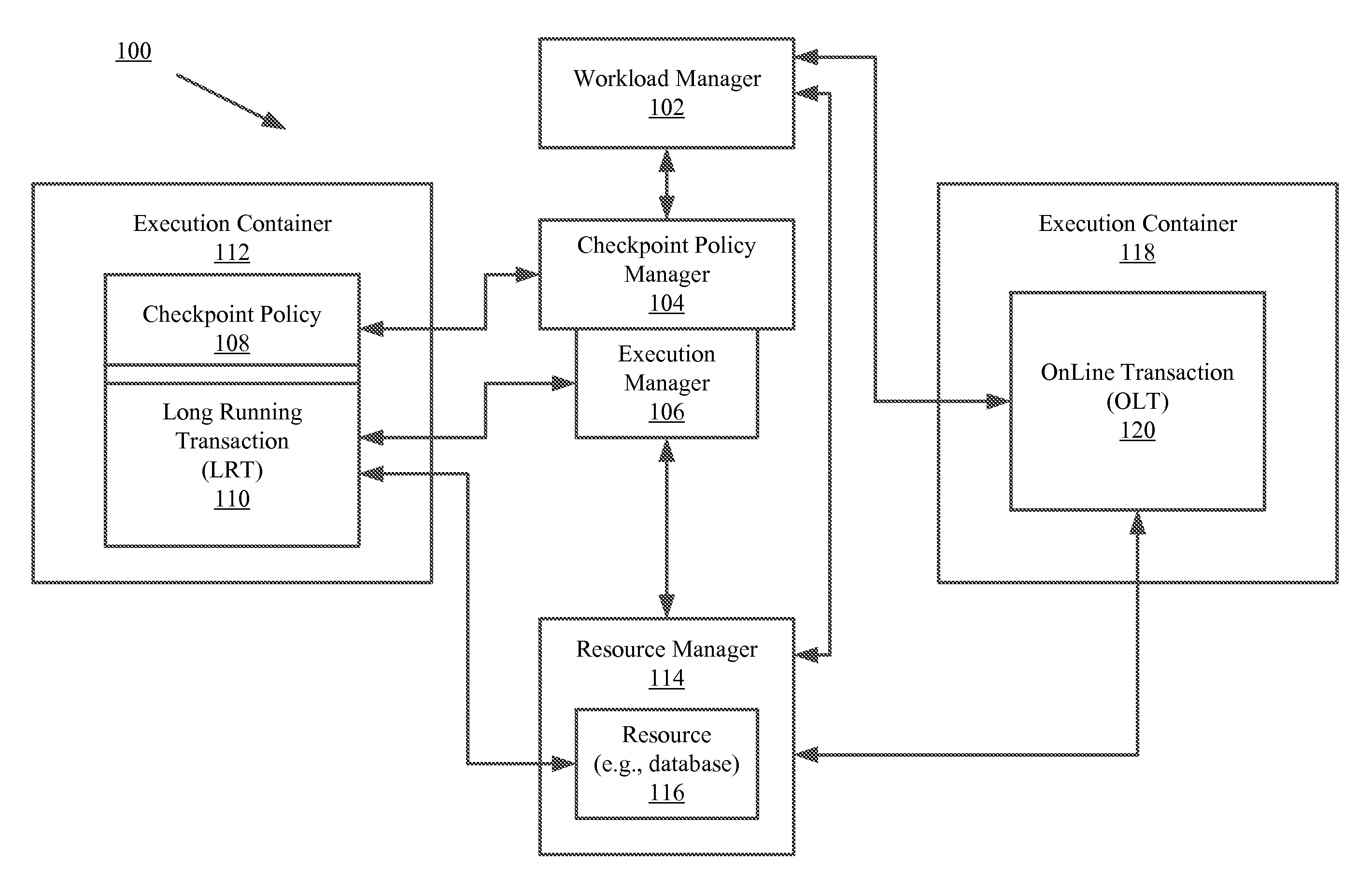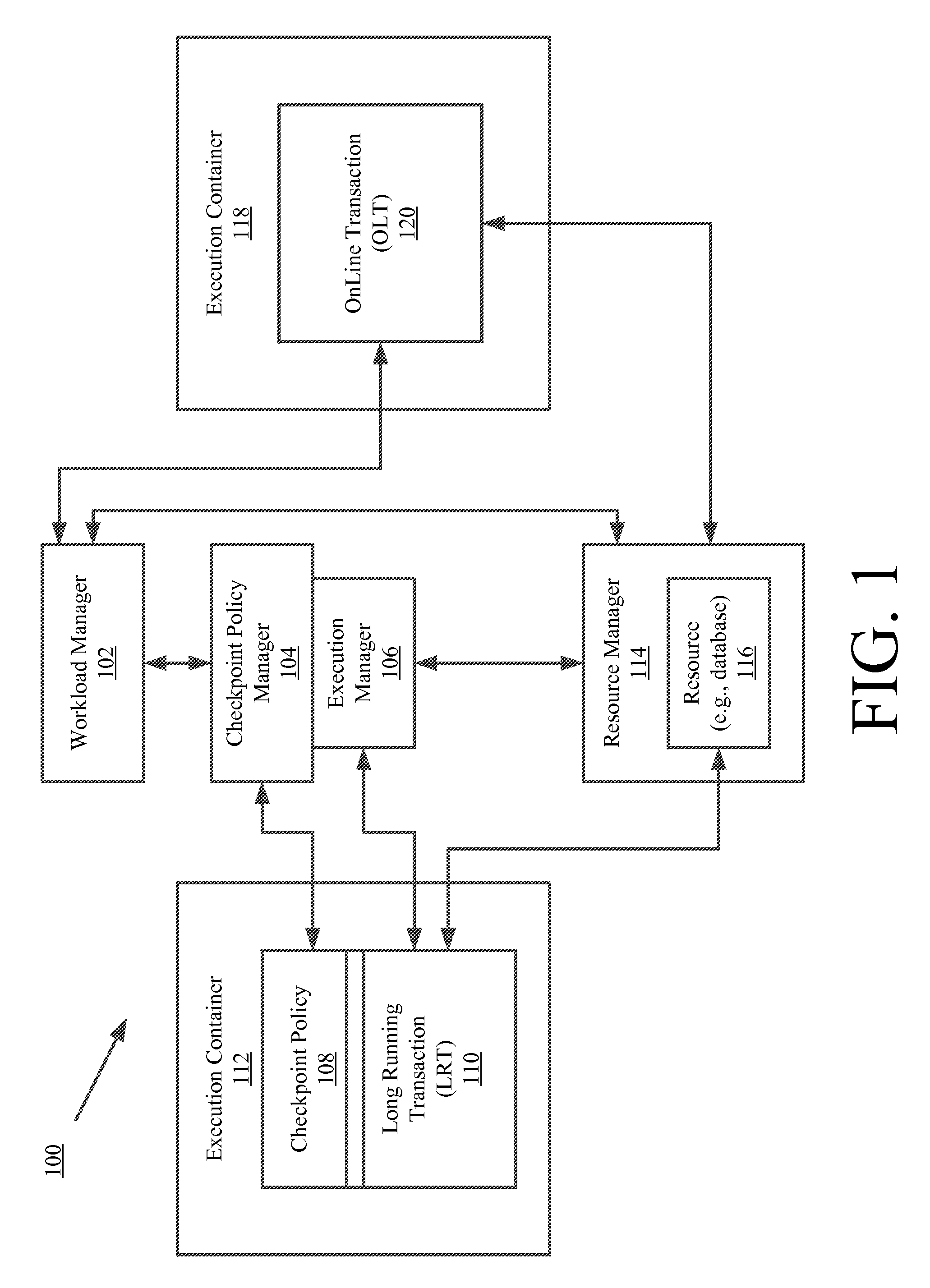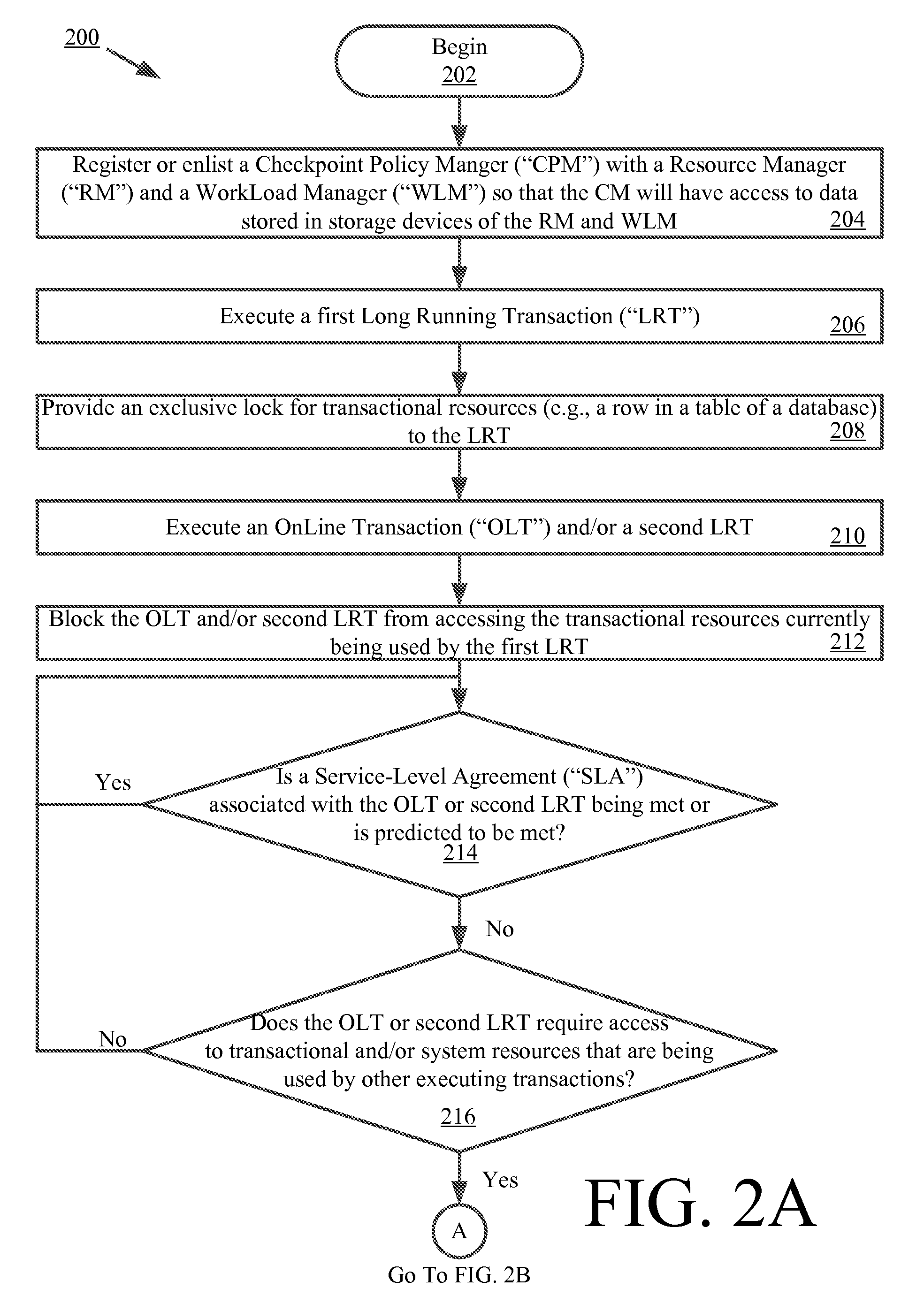Systems and method for dynamically throttling transactional workloads
a transactional workload and dynamic throttle technology, applied in the field of transaction oriented computer systems, can solve the problems of time delay between, adverse effect of concurrently executing transactions, undesirable adverse effects, etc., and achieve the effect of accelerating the transaction
- Summary
- Abstract
- Description
- Claims
- Application Information
AI Technical Summary
Problems solved by technology
Method used
Image
Examples
example 1
[0024]An LRT involves calculating the interest on one million (1,000,000) bank accounts at the end of a particular month. A system failure occurs during data processing for bank account record ninety-nine thousand nine hundred ninety-nine (99,999). As noted above, it is undesirable to rollback all the LRT work that has been completed thus far (i.e., data processing for bank account records 1-99,998). To avoid the need to rollback the LRT work, a checkpointing mechanism is employed. The checkpointing mechanism periodically takes snap-shots of the computational progress of the LRT processing. Stated differently, the contents of a primary memory is periodically copied into a secondary memory (e.g., a disk) during the LRT processing. As a result of the checkpointing, all or a significant portion of the completed work can be recovered subsequent to the system failure.
[0025]The LRT processing and checkpointing are implemented in a TPS via a batch / bulk paradigm offered by a batch execution...
example 2
[0044]A CheckBalance (“CB”) software application is provided to the users (e.g., bank customers) of a TPS (e.g., TPS 100 of FIG. 1). The CB software application is an OLT based software application for performing OLT processing jobs. The SLA requirements for OLT processing jobs are to: (1) process ninety percent (90%) of user requests every hour; and (2) complete each request in less than one (1) second.
[0045]In this example, the CB software application allows the users to login to check balances on their bank accounts. The information relating to their bank accounts is stored in an account database of the TPS. The account database (e.g., resource 116 of FIG. 1) is accessed during OLT processing which is performed at the request of the CB software application.
[0046]A Posting Batch (“PB”) software application is also provided to users (e.g., banks) of the TPS. The PB software application is an LRT based software application for performing LRT processing jobs. The SLA requirements for...
PUM
 Login to View More
Login to View More Abstract
Description
Claims
Application Information
 Login to View More
Login to View More - R&D
- Intellectual Property
- Life Sciences
- Materials
- Tech Scout
- Unparalleled Data Quality
- Higher Quality Content
- 60% Fewer Hallucinations
Browse by: Latest US Patents, China's latest patents, Technical Efficacy Thesaurus, Application Domain, Technology Topic, Popular Technical Reports.
© 2025 PatSnap. All rights reserved.Legal|Privacy policy|Modern Slavery Act Transparency Statement|Sitemap|About US| Contact US: help@patsnap.com



